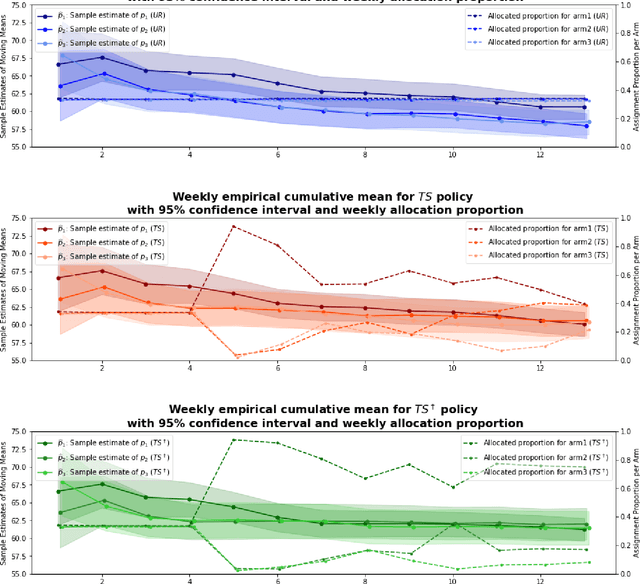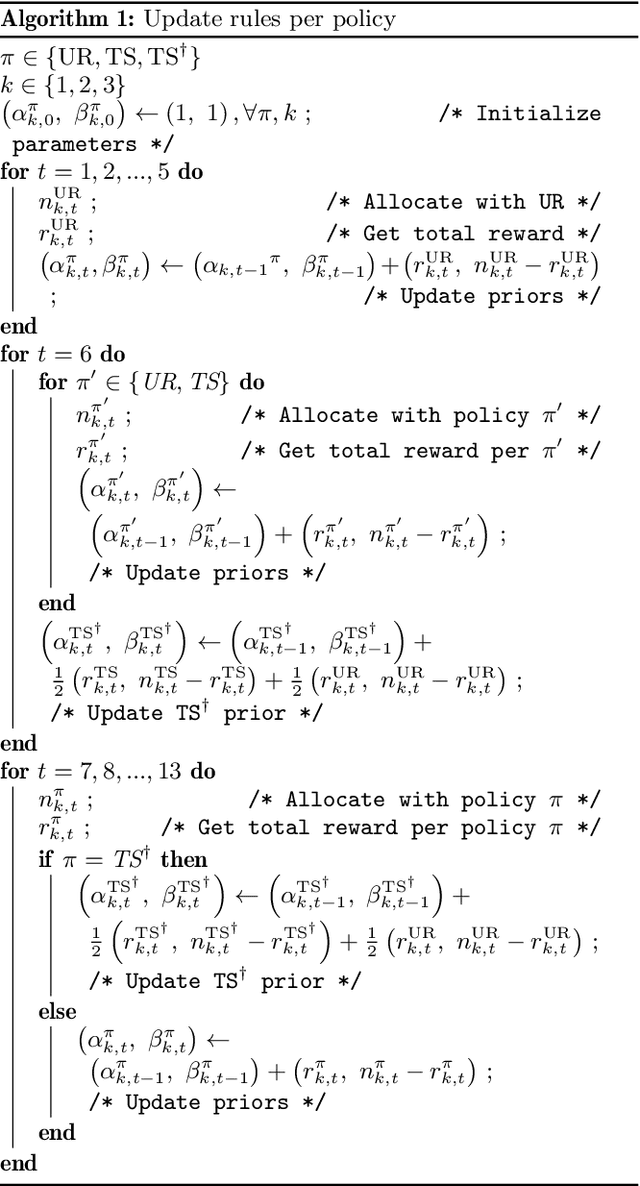Michael Liut
University of Toronto
Improving Student-AI Interaction Through Pedagogical Prompting: An Example in Computer Science Education
Jun 23, 2025Abstract:With the proliferation of large language model (LLM) applications since 2022, their use in education has sparked both excitement and concern. Recent studies consistently highlight students' (mis)use of LLMs can hinder learning outcomes. This work aims to teach students how to effectively prompt LLMs to improve their learning. We first proposed pedagogical prompting, a theoretically-grounded new concept to elicit learning-oriented responses from LLMs. To move from concept design to a proof-of-concept learning intervention in real educational settings, we selected early undergraduate CS education (CS1/CS2) as the example context. We began with a formative survey study with instructors (N=36) teaching early-stage undergraduate-level CS courses to inform the instructional design based on classroom needs. Based on their insights, we designed and developed a learning intervention through an interactive system with scenario-based instruction to train pedagogical prompting skills. Finally, we evaluated its instructional effectiveness through a user study with CS novice students (N=22) using pre/post-tests. Through mixed methods analyses, our results indicate significant improvements in learners' LLM-based pedagogical help-seeking skills, along with positive attitudes toward the system and increased willingness to use pedagogical prompts in the future. Our contributions include (1) a theoretical framework of pedagogical prompting; (2) empirical insights into current instructor attitudes toward pedagogical prompting; and (3) a learning intervention design with an interactive learning tool and scenario-based instruction leading to promising results on teaching LLM-based help-seeking. Our approach is scalable for broader implementation in classrooms and has the potential to be integrated into tools like ChatGPT as an on-boarding experience to encourage learning-oriented use of generative AI.
The Design Space of Recent AI-assisted Research Tools for Ideation, Sensemaking, and Scientific Creativity
Feb 22, 2025Abstract:Generative AI (GenAI) tools are radically expanding the scope and capability of automation in knowledge work such as academic research. AI-assisted research tools show promise for augmenting human cognition and streamlining research processes, but could potentially increase automation bias and stifle critical thinking. We surveyed the past three years of publications from leading HCI venues. We closely examined 11 AI-assisted research tools, five employing traditional AI approaches and six integrating GenAI, to explore how these systems envision novel capabilities and design spaces. We consolidate four design recommendations that inform cognitive engagement when working with an AI research tool: Providing user agency and control; enabling divergent and convergent thinking; supporting adaptability and flexibility; and ensuring transparency and accuracy. We discuss how these ideas mark a shift in AI-assisted research tools from mimicking a researcher's established workflows to generative co-creation with the researcher and the opportunities this shift affords the research community.
Understanding Help-Seeking Behavior of Students Using LLMs vs. Web Search for Writing SQL Queries
Aug 15, 2024

Abstract:Growth in the use of large language models (LLMs) in programming education is altering how students write SQL queries. Traditionally, students relied heavily on web search for coding assistance, but this has shifted with the adoption of LLMs like ChatGPT. However, the comparative process and outcomes of using web search versus LLMs for coding help remain underexplored. To address this, we conducted a randomized interview study in a database classroom to compare web search and LLMs, including a publicly available LLM (ChatGPT) and an instructor-tuned LLM, for writing SQL queries. Our findings indicate that using an instructor-tuned LLM required significantly more interactions than both ChatGPT and web search, but resulted in a similar number of edits to the final SQL query. No significant differences were found in the quality of the final SQL queries between conditions, although the LLM conditions directionally showed higher query quality. Furthermore, students using instructor-tuned LLM reported a lower mental demand. These results have implications for learning and productivity in programming education.
Opportunities for Adaptive Experiments to Enable Continuous Improvement that Trades-off Instructor and Researcher Incentives
Oct 18, 2023



Abstract:Randomized experimental comparisons of alternative pedagogical strategies could provide useful empirical evidence in instructors' decision-making. However, traditional experiments do not have a clear and simple pathway to using data rapidly to try to increase the chances that students in an experiment get the best conditions. Drawing inspiration from the use of machine learning and experimentation in product development at leading technology companies, we explore how adaptive experimentation might help in continuous course improvement. In adaptive experiments, as different arms/conditions are deployed to students, data is analyzed and used to change the experience for future students. This can be done using machine learning algorithms to identify which actions are more promising for improving student experience or outcomes. This algorithm can then dynamically deploy the most effective conditions to future students, resulting in better support for students' needs. We illustrate the approach with a case study providing a side-by-side comparison of traditional and adaptive experimentation of self-explanation prompts in online homework problems in a CS1 course. This provides a first step in exploring the future of how this methodology can be useful in bridging research and practice in doing continuous improvement.
Impact of Guidance and Interaction Strategies for LLM Use on Learner Performance and Perception
Oct 13, 2023Abstract:Personalized chatbot-based teaching assistants can be crucial in addressing increasing classroom sizes, especially where direct teacher presence is limited. Large language models (LLMs) offer a promising avenue, with increasing research exploring their educational utility. However, the challenge lies not only in establishing the efficacy of LLMs but also in discerning the nuances of interaction between learners and these models, which impact learners' engagement and results. We conducted a formative study in an undergraduate computer science classroom (N=145) and a controlled experiment on Prolific (N=356) to explore the impact of four pedagogically informed guidance strategies and the interaction between student approaches and LLM responses. Direct LLM answers marginally improved performance, while refining student solutions fostered trust. Our findings suggest a nuanced relationship between the guidance provided and LLM's role in either answering or refining student input. Based on our findings, we provide design recommendations for optimizing learner-LLM interactions.
ABScribe: Rapid Exploration of Multiple Writing Variations in Human-AI Co-Writing Tasks using Large Language Models
Oct 10, 2023Abstract:Exploring alternative ideas by rewriting text is integral to the writing process. State-of-the-art large language models (LLMs) can simplify writing variation generation. However, current interfaces pose challenges for simultaneous consideration of multiple variations: creating new versions without overwriting text can be difficult, and pasting them sequentially can clutter documents, increasing workload and disrupting writers' flow. To tackle this, we present ABScribe, an interface that supports rapid, yet visually structured, exploration of writing variations in human-AI co-writing tasks. With ABScribe, users can swiftly produce multiple variations using LLM prompts, which are auto-converted into reusable buttons. Variations are stored adjacently within text segments for rapid in-place comparisons using mouse-over interactions on a context toolbar. Our user study with 12 writers shows that ABScribe significantly reduces task workload (d = 1.20, p < 0.001), enhances user perceptions of the revision process (d = 2.41, p < 0.001) compared to a popular baseline workflow, and provides insights into how writers explore variations using LLMs.
Detecting LLM-Generated Text in Computing Education: A Comparative Study for ChatGPT Cases
Jul 10, 2023



Abstract:Due to the recent improvements and wide availability of Large Language Models (LLMs), they have posed a serious threat to academic integrity in education. Modern LLM-generated text detectors attempt to combat the problem by offering educators with services to assess whether some text is LLM-generated. In this work, we have collected 124 submissions from computer science students before the creation of ChatGPT. We then generated 40 ChatGPT submissions. We used this data to evaluate eight publicly-available LLM-generated text detectors through the measures of accuracy, false positives, and resilience. The purpose of this work is to inform the community of what LLM-generated text detectors work and which do not, but also to provide insights for educators to better maintain academic integrity in their courses. Our results find that CopyLeaks is the most accurate LLM-generated text detector, GPTKit is the best LLM-generated text detector to reduce false positives, and GLTR is the most resilient LLM-generated text detector. We also express concerns over 52 false positives (of 114 human written submissions) generated by GPTZero. Finally, we note that all LLM-generated text detectors are less accurate with code, other languages (aside from English), and after the use of paraphrasing tools (like QuillBot). Modern detectors are still in need of improvements so that they can offer a full-proof solution to help maintain academic integrity. Further, their usability can be improved by facilitating a smooth API integration, providing clear documentation of their features and the understandability of their model(s), and supporting more commonly used languages.
Increasing Students' Engagement to Reminder Emails Through Multi-Armed Bandits
Aug 10, 2022



Abstract:Conducting randomized experiments in education settings raises the question of how we can use machine learning techniques to improve educational interventions. Using Multi-Armed Bandits (MAB) algorithms like Thompson Sampling (TS) in adaptive experiments can increase students' chances of obtaining better outcomes by increasing the probability of assignment to the most optimal condition (arm), even before an intervention completes. This is an advantage over traditional A/B testing, which may allocate an equal number of students to both optimal and non-optimal conditions. The problem is the exploration-exploitation trade-off. Even though adaptive policies aim to collect enough information to allocate more students to better arms reliably, past work shows that this may not be enough exploration to draw reliable conclusions about whether arms differ. Hence, it is of interest to provide additional uniform random (UR) exploration throughout the experiment. This paper shows a real-world adaptive experiment on how students engage with instructors' weekly email reminders to build their time management habits. Our metric of interest is open email rates which tracks the arms represented by different subject lines. These are delivered following different allocation algorithms: UR, TS, and what we identified as TS{\dag} - which combines both TS and UR rewards to update its priors. We highlight problems with these adaptive algorithms - such as possible exploitation of an arm when there is no significant difference - and address their causes and consequences. Future directions includes studying situations where the early choice of the optimal arm is not ideal and how adaptive algorithms can address them.
Deep Camera Pose Regression Using Pseudo-LiDAR
Feb 28, 2022



Abstract:An accurate and robust large-scale localization system is an integral component for active areas of research such as autonomous vehicles and augmented reality. To this end, many learning algorithms have been proposed that predict 6DOF camera pose from RGB or RGB-D images. However, previous methods that incorporate depth typically treat the data the same way as RGB images, often adding depth maps as additional channels to RGB images and passing them through convolutional neural networks (CNNs). In this paper, we show that converting depth maps into pseudo-LiDAR signals, previously shown to be useful for 3D object detection, is a better representation for camera localization tasks by projecting point clouds that can accurately determine 6DOF camera pose. This is demonstrated by first comparing localization accuracies of a network operating exclusively on pseudo-LiDAR representations, with networks operating exclusively on depth maps. We then propose FusionLoc, a novel architecture that uses pseudo-LiDAR to regress a 6DOF camera pose. FusionLoc is a dual stream neural network, which aims to remedy common issues with typical 2D CNNs operating on RGB-D images. The results from this architecture are compared against various other state-of-the-art deep pose regression implementations using the 7 Scenes dataset. The findings are that FusionLoc performs better than a number of other camera localization methods, with a notable improvement being, on average, 0.33m and 4.35{\deg} more accurate than RGB-D PoseNet. By proving the validity of using pseudo-LiDAR signals over depth maps for localization, there are new considerations when implementing large-scale localization systems.
 Add to Chrome
Add to Chrome Add to Firefox
Add to Firefox Add to Edge
Add to Edge